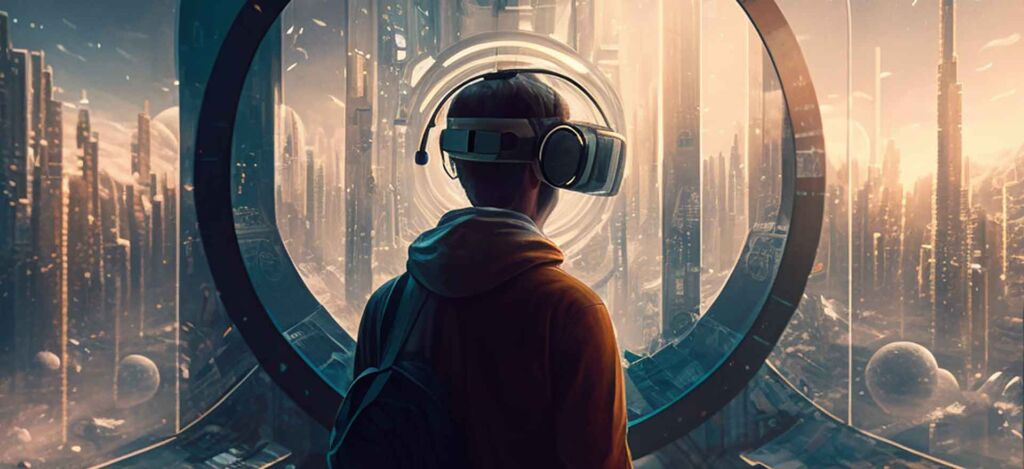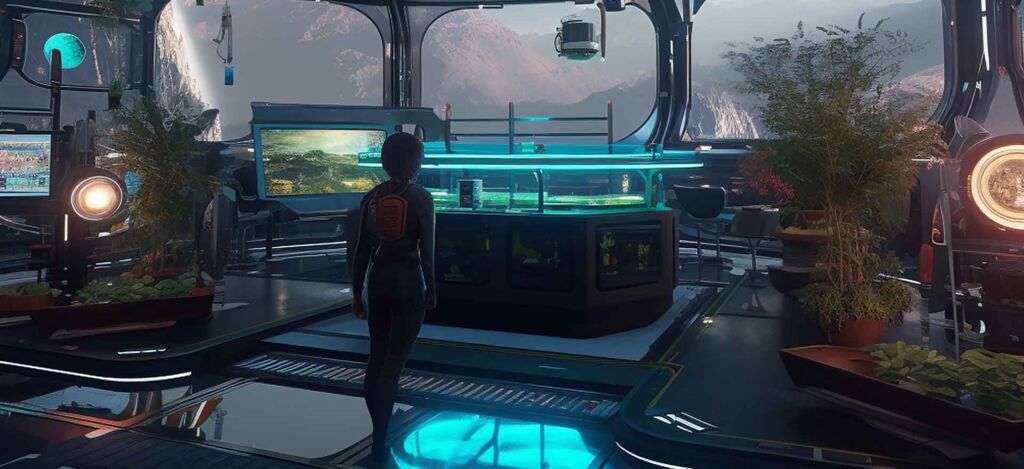Explaining the Concept, History, and Impact on society
A Comprehensive Guide to Understanding the Metaverse and its Implications for the Future of Human Interaction
1.- The concept of the Metaverse
The concept of the Metaverse has captured the imagination of technologists, futurists, and the general public alike. As the boundaries between the physical and digital worlds continue to blur, the Metaverse emerges as a potential solution to bridge these realms, creating new opportunities for human interaction, commerce, and creativity. This comprehensive guide will introduce you to the concept of the Metaverse, its history, and the potential impact it may have on society.

2.- What is the Metaverse?
The term “Metaverse” refers to a collective virtual space that encompasses various interconnected digital worlds, platforms, and experiences. In this expansive digital environment, users can interact with one another in real-time through avatars, engage in commerce, work, learn, and participate in various forms of entertainment. The Metaverse is not just a single platform but rather an ecosystem of interoperable virtual worlds, built on a decentralized infrastructure that allows for seamless interaction across different platforms.
3.- The History of the Metaverse
3.1. Early Concepts and Precursors
The concept of a shared virtual space has its roots in science fiction. The term “Metaverse” was first coined by author Neal Stephenson in his 1992 novel “Snow Crash,” where he described a fully immersive virtual reality environment that could be accessed and shared by millions of users worldwide. This idea inspired many early Internet pioneers, who saw the potential to create interconnected digital spaces that would allow for new forms of human interaction.
3.2. Virtual Reality and Augmented Reality
In the late 20th and early 21st centuries, advancements in virtual reality (VR) and augmented reality (AR) technologies laid the foundation for the Metaverse. These technologies allowed users to experience immersive digital environments and interact with virtual objects in the real world. As VR and AR hardware and software continued to improve, the idea of a shared, interconnected virtual space became more feasible.

3.3. The Emergence of Social Platforms and Online Gaming
The rise of social platforms and online gaming further contributed to the development of the Metaverse. Massively multiplayer online games (MMOGs) such as “World of Warcraft” and “Second Life” demonstrated the potential for large-scale, persistent virtual worlds where users could interact with each other, participate in a virtual economy, and create their own content. These experiences provided valuable insights into the possibilities and challenges of building a fully realized Metaverse.

4.- The Building Blocks of the Metaverse
For the Metaverse to become a reality, seamless interoperability between different platforms and digital environments is essential. This requires the creation of standardized protocols, APIs, and data formats that allow for smooth interaction between various systems. Interoperability enables users to move between different virtual worlds, bringing their digital identities, assets, and experiences with them. This creates a more connected and cohesive digital ecosystem, where users have the freedom to explore and engage with diverse virtual experiences.
4.2. Decentralization
Decentralization is another critical aspect of the Metaverse. Unlike traditional, centralized platforms that are owned and controlled by a single entity, the Metaverse should be built on a decentralized infrastructure that promotes user autonomy and reduces the concentration of power. Blockchain technology and decentralized systems, such as distributed ledgers and peer-to-peer networks, can provide the foundation for a more democratic and inclusive Metaverse.
4.3. Immersive Technologies
To create a truly engaging and realistic Metaverse, advancements in immersive technologies are necessary. This includes continued development in VR and AR hardware, such as headsets and haptic devices, as well as improvements in rendering, simulation, and artificial intelligence (AI) technologies. These advancements will help to create more lifelike and interactive virtual environments, enhancing the overall user experience in the Metaverse.

5.- The Current State of the Metaverse
5.1. Gaming Platforms
Gaming platforms represent a significant portion of the current Metaverse landscape. Games like “Fortnite,” “Minecraft,” and “Roblox” have already integrated many elements of the Metaverse, such as user-generated content, virtual economies, and social interaction. As these platforms continue to evolve and adopt more Metaverse-like features, they are likely to play a significant role in shaping the future development of the Metaverse.
5.2. Social Media and Virtual Worlds
Social media platforms and virtual worlds are also contributing to the growth of the Metaverse. Applications like VRChat and platforms like Facebook’s Horizon Workrooms showcase the potential for immersive social experiences in virtual environments. These platforms allow users to connect with others through avatars and participate in various activities, such as attending virtual concerts, exploring art galleries, or collaborating in workspaces.
5.3. Blockchain and Cryptocurrency
Blockchain technology and cryptocurrencies are playing an increasingly important role in the development of the Metaverse. Decentralized platforms like Decentraland and The Sandbox are built on blockchain technology, enabling users to own and trade virtual land and assets using cryptocurrencies. These platforms also foster the creation of decentralized applications (dApps) and smart contracts, which can facilitate various forms of commerce and collaboration in the Metaverse.
Educational institutions are exploring the potential of virtual land as a platform for remote learning and collaboration. Virtual campuses, classrooms, and lecture halls can be built on virtual land, providing students and educators with a more engaging and interactive learning experience.
6.- The Potential Impact on Society
6.1. Work and Education
The Metaverse has the potential to revolutionize the way we work and learn. Virtual offices and classrooms can provide a more flexible and immersive alternative to traditional physical spaces, enabling remote collaboration and more engaging educational experiences. The Metaverse can also facilitate professional networking, skill development, and access to global job opportunities, breaking down geographic barriers and fostering a more inclusive workforce.
6.2. Entertainment and Social Interaction
The entertainment industry is set to be transformed by the Metaverse, as it offers new ways for users to engage with content and interact with one another. Virtual concerts, film screenings, and live events can provide more immersive experiences, while social platforms can foster deeper connections between users through shared virtual experiences.
6.3. Economy and Commerce
The Metaverse is poised to create new economic opportunities and reshape the way we engage in commerce. Virtual goods, services, and experiences will become increasingly valuable, as users seek to customize their digital identities and environments. Cryptocurrencies and blockchain technology can enable more secure and efficient transactions, while decentralized marketplaces can promote fairer and more transparent commerce.
6.4. Governance and Ethics
As the Metaverse grows, questions regarding governance and ethics will become increasingly important. Issues such as digital identity, privacy, data ownership, and content moderation will need to be addressed to ensure a safe and inclusive environment for all users. Developing a decentralized governance model that balances user autonomy with the need for regulation will be a critical challenge for the future of the Metaverse.
Conclusion:
The Metaverse represents a bold vision for the future of human interaction, commerce, and creativity. As technology continues to advance, the barriers between the physical and digital worlds will continue to blur, making the Metaverse an increasingly tangible reality. Understanding the concept, history, and potential impact of the Metaverse is essential for anyone interested in the future of technology and its implications for society.
While the road to a fully realized Metaverse is still long and filled with challenges, the potential benefits are vast. By fostering a more connected, immersive, and decentralized digital ecosystem, the Metaverse has the potential to revolutionize various aspects of our lives, from work and education to entertainment and social interaction. As we continue to explore and shape this new frontier, it is crucial to remain mindful of the potential ethical and societal implications, ensuring that the Metaverse becomes a force for good that benefits all of humanity.
Happy creating!


